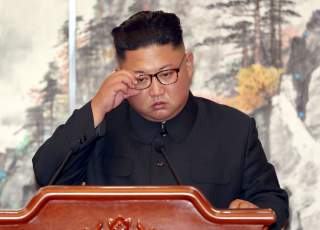The Hanoi Summit – We Asked Bill Richardson What Happens Next in U.S.-North Korea Relations
"There is, however, an opportunity to move forward under more realistic expectations on both sides."
Editor’s Note: Looking for more opinions on where we go after the Hanoi summit? Check out all 80 expert takes on where U.S-North Korea relations go next here.
Last month’s summit revealed what many of us suspected. President Trump did not comprehend that North Korean leader Kim Jong-un is unwilling to immediately give up his nuclear stockpile. Despite dire warnings from his staff, the President believed that he could cajole and charm his way to a major breakthrough. Instead of an agreement, the summit came to an abrupt end and satellite imagery shows new activity at North Korean missile bases.
Unfortunately for the President, he set unrealistically high expectations for his second meeting with the North Korean leader. There is, however, an opportunity to move forward under more realistic expectations on both sides. I see a number of areas where significant and substantive progress can still be made.
We need to bring the diplomats into the process on both sides. In North Korea, my hope is that the Foreign Minister will conduct talks with the United States. Recently, it has been the spy chief and intelligence services who are doing Kim’s bidding, and they are hardliners who are unwilling to negotiate. As for America, the special envoy for North Korea, Stephen Biegun, is aware of what is needed in terms of substance and he should play a leading role.
We need these diplomatic teams to develop a workable framework for negotiations. This framework must be thorough, including timeframes, definitions, and terms of reference. The United States and North Korea have been operating on different wavelengths, and we must rectify this before true progress can be made.
But let’s not start with denuclearization. Rather, let’s begin with some more realistic goals that still further our relationship with North Korea. These other tangible areas for advancement could include:
First, more returns of the remains of U.S. soldiers killed in the Korean War. American families get their relatives’ remains back home, the North Koreans get funds they desperately need and both sides have their militaries directly communicating.
Second, more family reunifications between North and South Korea. More than sixty years after the Korean War, many families still remain divided between the North and South. These family reunions help soften tensions between the two countries and are necessary if a formal peace treaty is eventually signed.
Third, joint job operations along the demilitarized zone. We must also demonstrate to the impoverished North Koreans what economic opportunities they can reap if a deal is reached.
If we start slowly and set realistic goals, we just might be able to work our way to denuclearization.
Bill Richardson, a former governor of New Mexico, served as secretary of the U.S. Department of Energy and ambassador to the United Nations. Richardson has extensive experience negotiating with Pyongyang and has visited North Korea several times. As a diplomat and Special Envoy, he has received five Nobel Peace Prize nominations, and has successfully won the release of hostages and American servicemen in North Korea, Cuba, Iraq, the Sudan Pakistan and Mexico.
Image: Reuters

